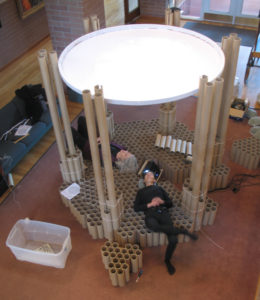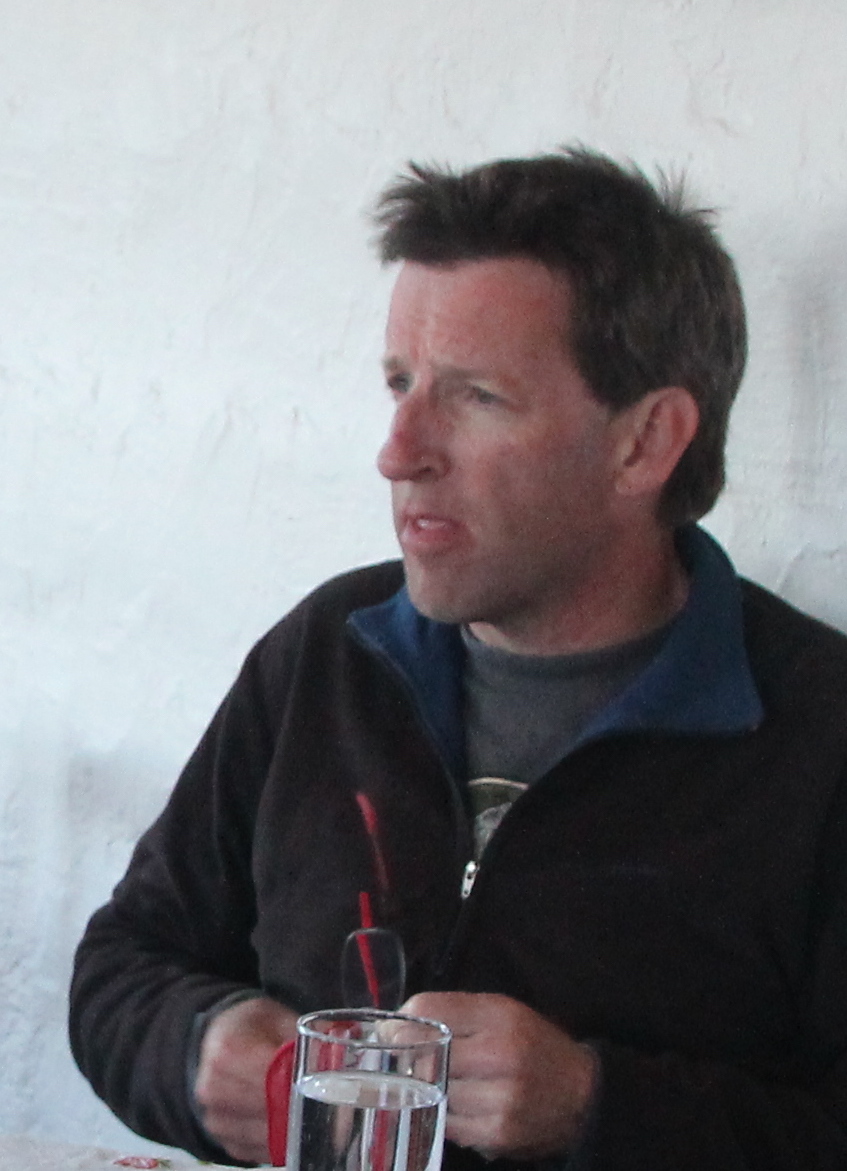 Time was when a bunch of trees waving their branches overhead was enough. I’d lie on my back, on the lawn, and watch the clouds catch in and release from their branches. That was enough to pass a summer afternoon. The trees, in my case, were Midwestern oaks, ashes, maples, but that didn’t really matter; it was a timeless occupation, a fullness that anyone anytime ought to be able to feel with whatever their tree neighbors were. The trees, some trees, would surely always be there.
Time was when a bunch of trees waving their branches overhead was enough. I’d lie on my back, on the lawn, and watch the clouds catch in and release from their branches. That was enough to pass a summer afternoon. The trees, in my case, were Midwestern oaks, ashes, maples, but that didn’t really matter; it was a timeless occupation, a fullness that anyone anytime ought to be able to feel with whatever their tree neighbors were. The trees, some trees, would surely always be there.
I thought back to those childhood afternoons on a recent unseasonably warm January day, as a sort of dystopian forest arose in the cathedral-ceilinged atrium of the School of Forestry building on the NAU campus. The trunks rising up from the floor, arrayed more thickly together than the densest doghair ponderosa thicket, were made of thick cardboard tubes. The canopy—that was something else entirely.
The two artists responsible for the piece, Ellen McMahon and Beth Weinstein, were both attired in black. They nodded approvingly at the lobby, which features a lot of exposed wood beams. “The environment where we show this should have some material connection to the piece,” Weinstein said. “The piece itself has a wood/paper logic to it, and so there should be some wood material in the building around it.”
McMahon and Weinstein both teach at the University of Arizona—McMahon in art and design, Weinstein in architecture—and are collaborators who like to work at the interface of art and science. In this case, they were installing their multimedia piece “Prone to Collapse,” an immersive environment that explores issues of forest health and degradation in the Southwest.
The piece, which will be on display in the School of Forestry for several months, germinated a few years ago after McMahon spent some sabbatical time with University of Arizona forest ecologist David Breshears at a field station in southern New Mexico. One evening, Breshears opened his laptop and said, “You might be interested in these.”
He showed her an array of perfectly round images of the local forest, all taken from the forest floor by upward-pointing cameras with fisheye lenses. For Breshears, the photographs represented data: his research team filtered the images to reduce them to black and white then used software to measure the proportion of light and dark. It was a way to measure how much forest canopy there was and how much of it was living and how much dead.
“He must have had something like 10,000 of them,” McMahon said, “and they were beautiful.”
With Weinstein, McMahon brainstormed a way for viewers to study the images. It was important, they felt, to break out of the traditional art-viewing mode. “Beth was really excited about the hemispheric photographs and wondered how they could be displayed without just being on a wall,” McMahon said. “Changing your position changes your perception. It becomes a fully engaged, immersive space.”
What the two of them came up with was an environment that promotes the childlike pleasure of lying on one’s back, looking up at trees. They built an elaborate array of hundreds of cardboard tubes repurposed from print shops, tied together to constitute a hexagonal platform about 15 inches high. Longer tubes at the corners support a round translucent fabric screen that hangs about eight feet off the ground. A projector hidden in the platform projects, onto the screen, a video made up of some of Breshears’ round photographs.
The only effective way to take in the piece is to lie on your back on the honeycomb platform and look up at the screen, which with its fisheye images becomes a simulacrum of the forest sky. Any child will know what to do right away, but adults will be lured to recline as well by the pillows McMahon and Weinstein made for the piece–they’re made of translucent fabric stuffed with the leavings of balsam firs, and they smell like Christmas concentrated.
“Lying on the platform affords a kind of sociability,” Weinstein said. “It’s the idea of sharing a kind of canopy bed with perfect strangers. People talk intimately about things like their childhood experiences of forests.”
The two artists first paired up to create the piece for an art and climate change conference in Tempe in 2015, then displayed it at the Arizona Biennial show in Tucson and later at the University of Arizona’s School of Natural Resources and Environment building. They were close to recycling it when the invitation came to display it at the School of Forestry.
“It’s strange that something that wasn’t supposed to have a long life at all is now on its fourth iteration,” mused Weinstein.
To recline inside “Prone to Collapse” is necessarily to slow down, to use smell and sound and sight to take in your surroundings. But it’s inescapable that the photos that make up the video projected up onto the screen tell today’s story of southwestern forests, at least 20 percent of which have already severely declined due to the drying and warming trends associated with climate change. Breshears’ research has shown that the increased temperatures trees in the region face today cause them greater stress, making it more likely that they’ll die during a dry spell that otherwise is no more severe than ones that occurred in the past.
Try it: settle yourself on the remarkably firm bed of cardboard tubes, each in its own way a recollection of the wood pulp from which it was made, and make yourself comfortable on a pillow of boughs. Then take in the changing scene above. The video is slow paced, but as it progresses images of lush conifers give way to skeletal trees. The edits fade gradually, so the trees from one image disappear slowly, becoming ghosts, as those in the next manifest themselves. It’s a potent reminder that as we face a fast-changing climate our own memories of the past can fuel us in understanding what it is we have to lose. And how decisively we have to act if children in the future are to have their own footloose experiences of staring up into the trees with not a care in the world.

